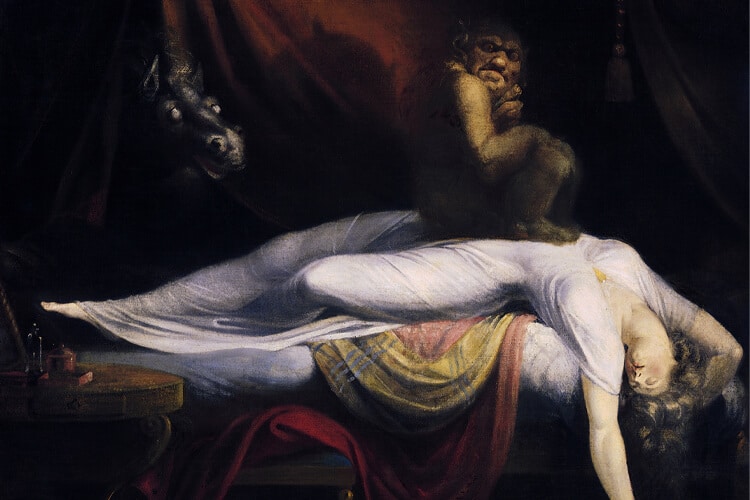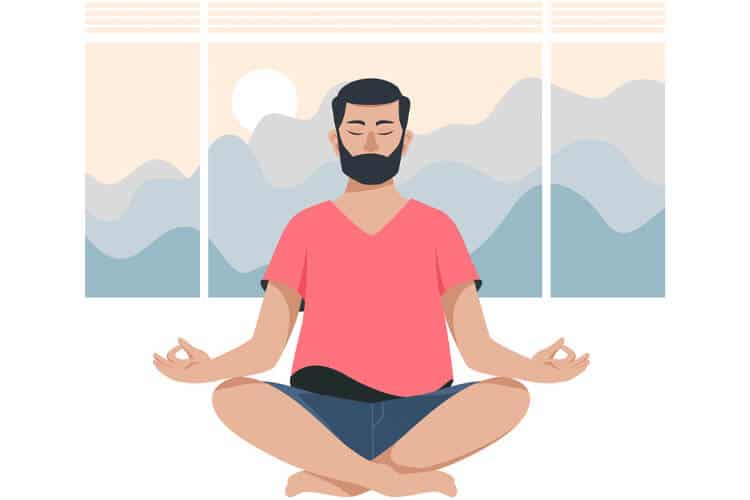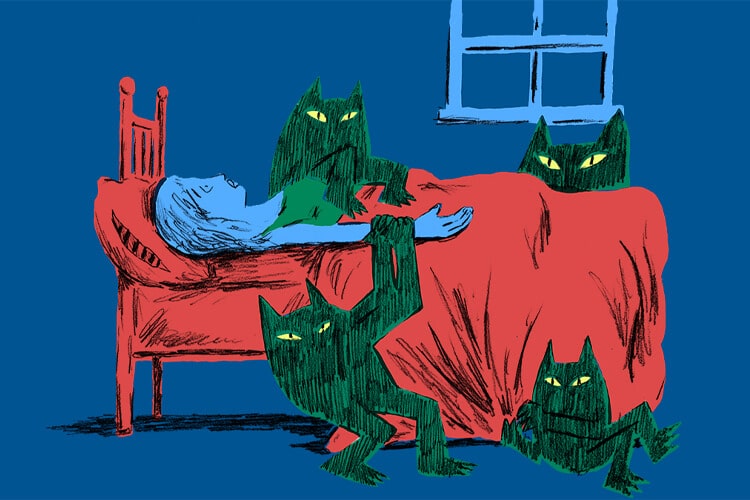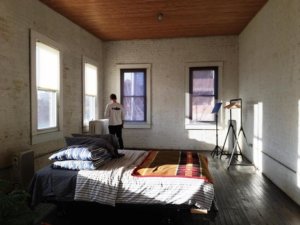Dreaming of nightmares is actually one of the most common sleep disorders. So, what is this thing called “nightmare” among the people? Is the nightmare real? Are demons or demons causing our nightmares, or is there a scientific explanation? Let’s see it all together in this content…
Why Do We See Nightmares in Our Dreams?
What we call nightmare is actually a phenomenon that can be explained scientifically. Before the body goes into sleep, the body’s temporary inability to move is a kind of paralysis. For this reason, its scientific name is sleep paralysis. There are many causes of sleep paralysis. The most important of these is sleep disorder. It is also observed more frequently in people who are depressed, in shift workers, and in people taking certain medications.
What is Sleep Paralysis, Popularly Known as “Nightmare”?

A number of physiological changes occur in the brain during the falling asleep phase and during sleep. When tested physiologically, sleep is irregular during the Rapid Eye Movements (REM – Rapid Eye Movements) period, and if awakened in this stage, “sleep paralysis” is experienced.
If sleep paralysis occurs during the falling asleep phase, the body is physiologically ready for REM sleep, but the brain is still not shut down. In medicine, this is called “hypnagogic (predormital) sleep paralysis. In this case, the brain wakes up, but the unconsciousness brought by sleep comes into play and the muscles cannot wake up.
The body, called “sleep atony,” causes the body to be paralyzed and even to feel as if someone is sitting on it or a weight has collapsed. This is just like a real paralysis; because the person is conscious that he is awake, but cannot move. If sleep paralysis – often seen in this way – occurs before waking, the REM cycle is incomplete; but the brain will wake up from sleep and consciousness will return.
This is called “hypnopompic (postdormital) sleep paralysis” in medicine. Again, in this case, the person is aware that he has awakened, but the sleep atony is not turned off and he experiences a temporary paralysis. In short, sleep paralysis is a condition that occurs due to the physiological incompatibility of the perceptual part of the brain and the part that keeps the body under control.
(adsbygoogle = window.adsbygoogle || []).push({});
How Long Does Sleep Paralysis Last?
Sleep paralysis can last from a few seconds to a few minutes. In very extreme cases, it is also known to last for 4-5 hours. Most people do not experience sleep paralysis more than once in their lifetime. Such single cases are called Isolated Sleep Paralysis. Although not very common, sometimes people with sleep paralysis recur for a lifetime. This is called Recurrent Sleep Paralysis in medicine.
Isolated Sleep Paralysis is not usually a cause of illness, but rather a natural consequence of our bodies not working perfectly. But Recurrent Sleep Paralysis can be a symptom of a number of diseases. Sometimes hallucinations can occur during sleep paralysis. These can be felt both auditory, visual and tactile.
Since this situation, in which the consciousness is completely open and the body is locked, is extremely frightening, the brain works fast to protect itself, and some non-existent images appear at the same time. These unreal and frightening images are in one’s own subconscious. These delusions, which even led to the emergence of some myths about the subject, consist of some hallucinations of purely physiological origin.
Why Are Extraordinary and Frightening Beings Seen in Sleep Paralysis?
No matter how scientifically explained sleep paralysis, it is a frightening experience due to unrealistic images. Because the individual is aware that he is awake with his sense organs, but he cannot move his body. The individual continues to dream, especially because the REM cycle in which we dream is not completed. At this very moment, some imaginary products such as monsters, creatures, demons and jinn are seen in our subconscious. The reason why sleep paralysis has become a social myth and is called “nightmare” is the unrealistic meaning attributed to sleep paralysis.
Why Do Some People Have Sleep Paralysis More Often Than Other People?
Situations where sleep paralysis is observed more frequently are as follows:
- In patients with narcolepsy,
- Lying down especially during sleep
- Transitioning through a stressful and anxious period
- Sudden change of lifestyle
- Excessive alcohol consumption
- Sleep less
- sleep hungry
- sleeping pills used
Narcolepsy (sleep cycle disorder) is sought first in people who have had sleep paralysis during attacks. If this diagnosis is made, it is possible to treat sleep paralysis.
What are the Treatment Methods?
When a doctor is consulted with the complaint of Sleep Paralysis, if sleep disorders are added to these complaints, the patient is sent to the sleep laboratory and his EEg is monitored. A diagnosis of sleep disorder is made by looking at brain waves. If there is only one sleep disorder, it is tried to regulate sleep with the help of drugs.
It is also seen that mental disorders such as depression can cause sleep paralysis. This problem can be completely eliminated with antidepressants to be prescribed by a psychiatrist. Therapy for the person’s mental problems is also very helpful, but this may not be enough to treat the physical problem.
In the treatment of sleep paralysis, some drugs are used that allow us to sleep, do not harm the REM – Non-REM cycle, and provide a deep sleep. Antidepressants alone cannot cure sleep disturbance, but when they treat depression, sleep paralysis may go away. Using these drugs without a prescription is definitely very harmful, because the effects of such drugs differ from person to person. For this reason, it should not be used without medical supervision.
Therapy and Meditation Recommendations for Sleep Paralysis (Dreams)
Neurologists at Baland Jalal Cambridge University have published a treatment for sleep paralysis directly. This treatment, which they call Meditation-Relaxation Therapy (MR Therapy), is based on studies done in different countries. MR Therapy consists of 4 different stages.
- Re-evaluation of the attack: The person closes his eyes, avoids panic, and calms himself down by suggesting that this attack is not life-threatening.
- Psychological and emotional distance: The sleeper reminds himself that fear and anxiety will worsen his situation and increase the duration of sleep paralysis.
- Mindfulness inward meditation: Focusing your full attention on an object or objects that you value internally.
- Relaxing the muscles: Allowing the muscles to relax by avoiding controlling our breathing and trying to move. There are also a number of case studies supporting this treatment.
(adsbygoogle = window.adsbygoogle || []).push({});
The Evolutionary Neuroscience of Sleep Paralysis
Because people with sleep paralysis are too afraid of the moment they are in, their midbrain is overstimulated. This is seen in people who are under very serious threat. Feeling alone, helpless, and about to suffocate can cause the brain to create an existence that does not really exist.
We think we can only experience the pressure and paralysis experienced during sleep paralysis if someone tries to kill us. The source of the images created by our brain during sleep paralysis can most likely be explained as the effects of the culture we live in. If we listen to our senses at the same time, it informs us that there is no attacker.
In reality, there is no existence. However, in the evolutionary process and in uncertain situations, our brain has specialized in perceiving such warnings as a threat in order to stay safe. Only then do we have a chance to survive. Such conditions also increase the effect of sleep paralysis. The brain does not accept such warnings from the sense organs because of the dangers of the unknown and frightening situation.
In researches, it has been determined that some imaginary things we see during sleep paralysis occur in parts of our brain called amygdala (fear center), thalamus (the region that acts as a door between conscious and subconscious), anterior cingulate and pontine tegmentum. Because all these neural regions are over-stimulated during sleep paralysis, the brain cannot distinguish between real and unreal things.
(adsbygoogle = window.adsbygoogle || []).push({});
The Meanings of the Concept of “Dreams” in Cultures
- In Chinese culture, a ghost is believed to sit on a sleeping person.
- There are two beliefs about nightmares in India. The first is that the reason for being conscious while asleep is seen as one of the signs on the path to enlightenment. The second is an act of demons.
- In Scandinavian myths, there is a female and evil ghost named Mara who causes sleep paralysis.
- In Mexico, the hill climber is called the dead.
- In Korea it is called being suppressed by Gawi. Gawi means devil or spirit.
- In Vietnam, they call sleep paralysis a ghost that steps on a person.
- In medieval Europe, sleep paralysis was believed to be related to demons and sorcerers. In England, people believed that witches sat on top of people during sleep, so they couldn’t breathe or move.
- In Russia, it is believed that it is the house spirit that punishes those in the house in cases such as bad marriage and cheating.
- In Laotian culture, ghosts come at night and grab a person’s arms and legs and climb over them, and even cover their mouths so that they don’t make a sound.
- Scientists, on the other hand, think that astral travel and some paranormal events are actually caused by misinterpretation of medical things experienced during sleep paralysis.
What Causes Blindness When Standing Up? How Can It Be Prevented?




















